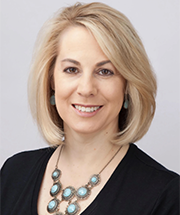KU Journalism partnering on 'Good Morning Indian Country,' providing news for Indigenous communities
LAWRENCE — One of the most important roles of a journalist is to find the news that’s not being covered and share it with the communities that need it. The William Allen White School of Journalism & Mass Communications at the University of Kansas is matching its students with community partners to deliver news via “Good Morning Indian Country,” a morning talk show and information program for Indigenous audiences.
The show is a partnership among the Lawrence Arts Center, KU, Haskell Indian Nations University and community members to provide news and information as “morning radio for the reservation,” as the program describes itself. The show contains interviews with Native newsmakers, conversations, weather reports, updates on powwows and news provided by journalism students that would otherwise likely go uncovered.

“It’s all about staking out Native media in a geography that hasn’t traditionally had media representation. There’s room to grow, and I look forward to helping with that,” said Melissa Greene-Blye, assistant professor of journalism at KU and a partner in "Good Morning Indian Country." “Our students are realizing there is a lot of news out there of interest to Native communities that might not get a lot of coverage, and this helps make them aware of that and learn about representation. I always say one of the most important ways we can improve representation is by educating the next generation of journalists, and working on 'GMIC' is offering a great opportunity to do just that.”
The idea for "Good Morning Indian Country" was born when Lawrence native and KU alumnus Freddy Gipp realized how isolated people were during the pandemic. He approached Ruben Little Head Sr., a well-known powwow emcee, who was giving Facebook Live broadcasts about Native issues with the idea of a streamed talk and news program. The show debuted with a six-episode series this year and has already been renewed for an 18-episode series in the fall. Broadcast from the main stage of the Lawrence Arts Center every Wednesday from 9 a.m. to 10:30 a.m., the show is supported by a 2021 Natural and Cultural Grant from the Douglas County Heritage Conservation Council, Humanities Kansas and by a grant from the National Endowment for the Arts.
Lily O’Shea Becker, a junior journalism major and political science minor at KU, was taking a diversity and media class with Greene-Blye, a member of the Miami Tribe of Oklahoma, when approached with the idea of being an intern for the show. One of five interns working on the show from KU and Haskell, she said being able to provide news packages for the show while honing her journalistic skills and providing news to an underserved community was a chance she could not pass up.
“I thought it would be good to get experience where I didn’t have it, and I loved my diversity in media class,” Becker said. “In that class I noticed there are not a lot of Native news outlets and important news was going unnoticed. I don’t know if I’ll have the opportunity to be there at the very beginning of a project like I have with 'Good Morning Indian Country' again, and there’s always room to learn.”
Thus far, the students, part of KU’s KUJH news television broadcast, have provided coverage on stories including STEM programs at Haskell Indian Nations University, Native art spaces and controversial statements about Indigenous populations made by a state education official. Becker said it has been rewarding to write news, provide video and graphics, and curate content with partners while learning about what works best for the program.
Greene-Blye, whose research examines journalistic representations and negotiations of American Indian identity, said "Good Morning Indian Country" not only is an opportunity to provide local, regional and national news of importance that is often overlooked but also an opportunity to showcase the vital role of journalism in serving Native communities as well.
Image credit: Lawrence Arts Center